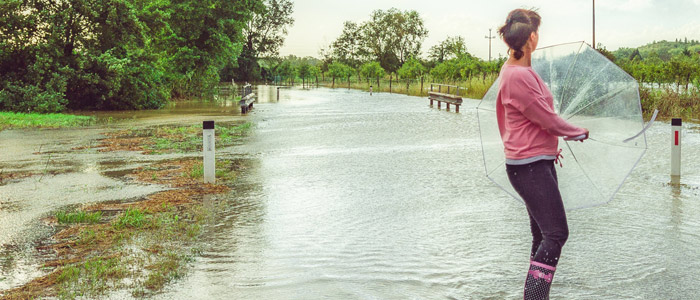
According to the Federal Emergency Management Agency (FEMA®) and the National Flood Insurance Program® (NFIP), more homes in the United States are damaged by floods each year than any other natural disaster. And given that for most of us, our homes are likely our most valuable and precious possession, we recommend you carefully consider your situation and find the right flood insurance to protect your home and property.
Sadly, many people don’t learn the facts about flood insurance until they’ve experienced an event. We’re hoping every UFCU Member is well informed about their situation. The UFCU Insurance Services® team would like to share five little known facts about flood insurance to keep you in the know.
1. Flooding Can Happen to Anyone
Many factors can contribute to flooding, such as rapid rain accumulation, poor drainage systems, or broken water mains. Those who live near bodies of water or in floodplains are not the only ones at risk. Even people who live on a hillside can suffer flood damage by mudflow.
2. You Might Not Be Covered
Homeowner insurance does not cover flooding due to rising water outside your home. Flood insurance provides coverage that your homeowner insurance doesn’t.
Read more about how to insure your home or property, or contact UFCU Insurance Services at (512) 421-8100 or (800) 223-4197 to learn more.
3. Flood Insurance Is Affordable
Flood insurance rates for low-risk zones are affordable. A flood certificate can help you determine the likeliness of flooding for your home. The lower the risk of flooding, the lower your flood insurance rate will be.
4. NFIP Has Limited Coverage
The NFIP only covers homes up to $250,000 and contents for up to $100,000. If the value of your home is more than $250,000, you can purchase an excess flood insurance policy to bridge the gap between the NFIP policy and your replacement cost.
5. You Can’t Afford to Procrastinate
There is a mandatory 30-day waiting period for policies that are not required by your lender. That means you simply cannot wait until a rain event to purchase a policy. Ask yourself if you’re willing or able to risk paying for flood damage on your own. We recommend a flood insurance policy that covers the replacement value of your home.
Thank you for your feedback.